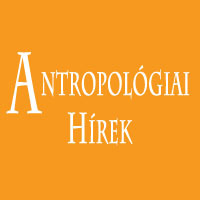Még a héten megoldódhat Nofertiti sírjának rejtélye
http://mult-kor.hu/meg-a-heten-megoldodhat-nofertiti-sirjanak-rejtelye-20151126
Miért néznek arccal a tenger felé a perui múmiák?
http://mult-kor.hu/miert-neznek-arccal-a-tenger-fele-a-perui-mumiak-20151127
Leletek a szennyvíztisztító helyén
http://www.csepel-sziget.hu/wordpress/?p=517
Az emberi természet sötét oldala miatt gyorsult fel az ősemberek vándorlása
http://mult-kor.hu/az-emberi-termeszet-sotet-oldala-miatt-gyorsult-fel-az-osemberek-vandorlasa-20151202
Celtic Budapest – The Burial Complex from Csepel Island
https://balkancelts.wordpress.com/2015/01/24/celtic-budapest-the-burial-complex-from-csepel-island/
Radar survey underway at Tutankhamun's tomb in Luxor
http://english.ahram.org.eg/NewsContent/9/40/171895/Heritage/Ancient-Egypt/Radar-survey-underway-at-Tutankhamuns-tomb-in-Luxo.aspx
Solved: the mystery of Britain’s Bronze Age mummies
https://theconversation.com/solved-the-mystery-of-britains-bronze-age-mummies-48475
Mummies have had a bad wrap – it’s time for a reassessment
https://theconversation.com/mummies-have-had-a-bad-wrap-its-time-for-a-reassessment-48729
How a 200-year-old mummy revealed secrets of TB [Vác]
https://theconversation.com/how-a-200-year-old-mummy-revealed-secrets-of-tb-16209
Gummy mummies: Egyptians used a millennia-old embalming recipe
https://theconversation.com/gummy-mummies-egyptians-used-a-millennia-old-embalming-recipe-30454
Syphilis widespread in Central Europe even before Columbus' voyage to America
http://www.sciencedaily.com/releases/2015/11/151119103306.htm
How the introduction of farming changed the human genome : Study tracks gene changes during the introduction of farming in Europe
http://www.sciencedaily.com/releases/2015/11/151123202631.htm
Pre-Inca mummy remains found in Lima temple
http://www.thehistoryblog.com/archives/39640
Radiologists investigate woman who died in Egypt more than 3,000 years ago
http://phys.org/news/2015-12-radiologists-woman-died-egypt-years.html
Earliest modern humans in Southern China recast history of early human migration
http://phys.org/news/2015-11-earliest-modern-humans-southern-china.html
Female 'Amazon' warrior buried 2,500 years ago in Altai Mountains was... male
http://siberiantimes.com/science/casestudy/news/n0506-female-amazon-warrior-buried-2500-years-ago-in-altai-mountains-was-male/
Lactose Tolerance Came From Central Asia Approximately 4,000 Years Ago
http://anthropology.net/2015/12/02/lactose-tolerance-came-from-central-asia-approximately-4000-years-ago/
D'anciennes momies égyptiennes embaumées de façon inhabituelle
http://decouvertes-archeologiques.blogspot.hu/2015/12/danciennes-momies-egyptiennes-embaumees.html
Ajánló
„Két nemzet büszkesége” – Stein Aurél kalandos élete
http://mult-kor.hu/ket-nemzet-buszkesege---stein-aurel-kalandos-elete-20151126
Érdekes
2,700 yr-old sarcophagus of ‘high priest of God Amun’ unearthed in Luxor
http://thecairopost.youm7.com/news/179349/news/2700-yr-old-sarcophagus-of-high-priest-of-god-amun-unearthed-in-luxor
Why Do Some Non-Ginger Guys Have Ginger Beards?
http://www.iflscience.com/health-and-medicine/why-do-so-many-guys-have-ginger-beards
Napi 130 fős tömeges emberáldozat [aztékok]
http://www.origo.hu/tudomany/tortenelem/20151127-aztek-birodalom-kozep-amerikai-civilizacio-spanyol-hoditas-emberaldozat-tollas-kigyo.html
Őskőkori elefántmészárszék nyomait fedezték fel Görögországban
http://www.origo.hu/tudomany/20151126-oskokor-elefant-lelohely-gorogorszag.html
Recognizing the basic structure of language is not unique to the human brain
http://www.sciencedaily.com/releases/2015/11/151117091227.htm
Extensive Ancient Underground Networks Discovered Throughout Europe
http://www.ancient-origins.net/news-history-archaeology/extensive-ancient-underground-networks-discovered-throughout-europe-00540


